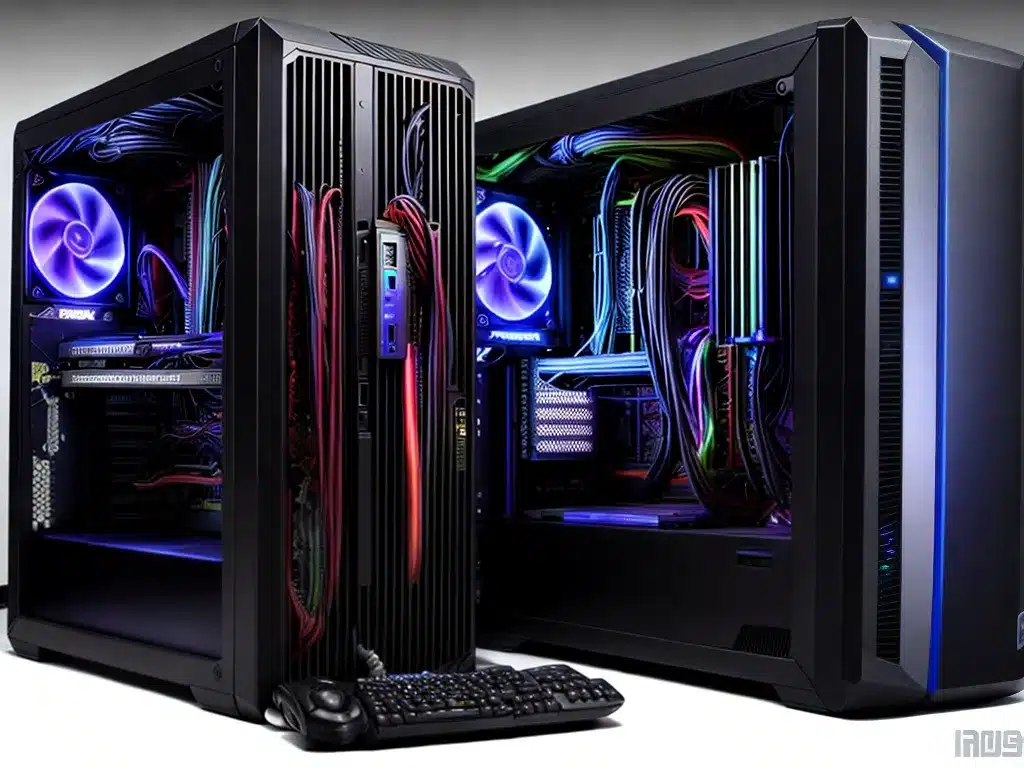An unstable PC can be frustrating. As a tech enthusiast, I’ve dealt with my fair share of instability issues over the years. Here is my guide to troubleshooting some common causes of an unstable PC, based on my personal experience.
Symptoms of an Unstable PC
An “unstable” PC can manifest in several ways. Here are some typical symptoms:
- Random crashes or blue screen errors
- Frequent freezing requiring forced reboots
- Programs crashing unexpectedly
- Games crashing or glitching
- Weird graphical artifacts or display issues
- Overall slow performance
If you’re experiencing any of these on a regular basis, you likely have an instability problem that needs troubleshooting.
Potential Causes
There are several potential hardware and software culprits that can make a PC unstable:
Hardware Issues
- Faulty RAM modules – Bad RAM is a common cause of random crashes and BSODs.
- Overheating – Excessive heat can cause a PC to crash or freeze.
- Failing PSU – If the power supply is dying, it can cause all kinds of instability.
- Loose connections – Make sure components like RAM, GPU, and cables are properly seated.
Software Issues
- Driver conflicts – Conflicting or corrupt drivers can wreak havoc.
- Malware/viruses – Malicious programs can definitely destabilize things.
- OS corruption – An unstable OS install itself may be the issue.
- Too many background apps – Too many programs running can overload the system.
Troubleshooting Step-by-Step
With the potential causes in mind, here is a systematic approach to troubleshooting:
1. Check Temperatures
Use software like SpeedFan or HWMonitor to check component temperatures. If any are excessively high (90C+), thermal throttling may be causing instability. Improve cooling or reduce system load.
2. Scan for Malware
Use a thorough antivirus/malware scanner to check for any infections. Malwarebytes Anti-Malware is a good choice. Quarantine or remove any found infections.
3. Update Drivers
Make sure all system drivers are up-to-date, especially chipset, GPU, and storage drivers. Use a tool like Driver Booster to handle this conveniently. Reboot after updating.
4. Update BIOS
An outdated motherboard BIOS can cause compatibility issues. Check the manufacturer’s website for the latest BIOS update for your model and install it.
5. Test RAM
Use MemTest86+ or Windows Memory Diagnostic to thoroughly test your RAM. Let it run for at least 8 passes. If errors occur, a RAM module is likely faulty and should be replaced.
6. Monitor System Resources
Use Task Manager and Resource Monitor to check for any processes hogging CPU, RAM, or disk resources. End problematic processes.
7. Clean Install Graphics Drivers
Use DDU to fully uninstall GPU drivers, reboot into Safe Mode, and install the latest driver package fresh. This can fix GPU-related instability.
8. Check Event Viewer
Event Viewer logs can point to specific hardware/software faults. Google any critical error codes for solutions.
9. Reseat Components
Open the case and reseat components like RAM, GPU, cables, etc. Loose connections can cause crashes.
10. Test with Minimum Configuration
Remove unnecessary hardware like extra RAM, drives, GPUs. Test with just the core components needed to boot. This isolates faulty hardware.
11. Try a Clean Install
If all else fails, do a clean reinstall of Windows to rule out OS files corruption. Backup data first.
Preventing Future Instability
Here are some tips to prevent instability problems in the future:
- Keep drivers/BIOS up-to-date
- Monitor temps and resource usage
- Use reputable components from quality brands
- Don’t overclock components excessively
- Keep the PC clean and well-ventilated
- Use a quality surge protector
- Regularly backup critical data
With some diligent troubleshooting and preventive maintenance, you can hunt down and fix whatever is causing your PC to be unstable. Let me know if you have any other questions!













